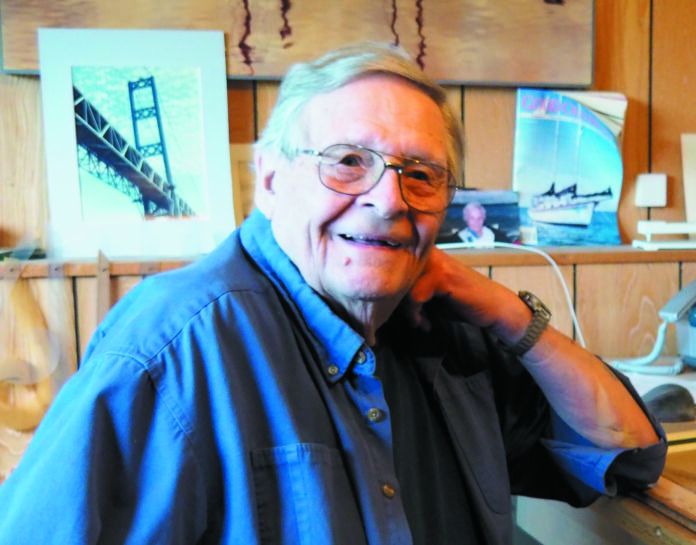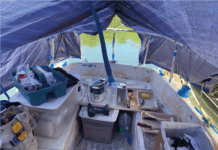You don’t have to spend much time in the sailing world to recognize it is filled with some of the planet’s most creative, good-spirited and generous people. Must be something in the wind . . . or water.
We lost one of those people on September 30—yacht designer Edward “Ted” Brewer, who died at home in Agassiz, BC at the age of 88.
Practical Sailor readers will recognize Ted as the designer of the Whitby 42, a quintessential cruising ketch that would launch his career as a designer. Along with partner Bob Wallstrom, he produced over 100 custom and production designs.
Cruisers still wrestling over the fin vs. full keel decision can credit Ted for helping to open that can of worms. The gradual chipping away at the full keel cruiser’s underbody that emerged in his early designs earned the nickname, “Brewer bite.”
At the advice of his army company commander who recognized his passion for sailing, Brewer resigned his commission as lieutenant and enrolled in a design course from Westlawn Institute of Marine technology. Renowned designer Bill Luders soon took him under his wing and became a mentor for Ted. Together they worked on two America’s Cup boats: Weatherly (1962) and American Eagle (1964), which are still sailing today. One need only compare two other Brewer boats out on the water today — the budget friendly Nimble 30, and the 70-foot schooner Tree of Life — to sense the great range of his abilities as a designer. Fittingly, his first date with his wife Betty, whom he married in 1988, was aboard a Nimble 30.
Like many in my field, my own connection with Ted was as an endless fount of knowledge. In my early days as a sailing writer, he was one of a few designers who would pick up the phone and patiently explain the unique design features of a particular boat I was reviewing.
He wrote three books, “Understanding Boat Design,” “Cruising Yacht Design,” and “Ted Brewer Explains Sailboat Design,” and the first is always within easy reach on my bookshelf. If you are looking for your first cruising boat, the ten bucks you spend on “Understanding Boat Design” will be money well spent. At Practical Sailor, we still use his formula for “comfort ratio,” to get a preliminary picture of a boat we’re reviewing. Initially a tongue-in-cheek exercise for Brewer, the formula does, in fact, offer insight into the performance of many boats.
In the 1970s, Brewer helped pioneer the now popular radius bilge method of forming a metal hull, eliminating the hard chines that characterized metal boats of that era. His emphasis on simplifying construction in all materials made his boats popular among DIY builders, which inevitably led to less-than-perfect outcomes. Rather than staunchly defend his own work, or emphasize the impact of unsanctioned modifications, he candidly discussed the pros and cons of his designs, how it had been executed, and how it could be improved.
For those wanting to learn more about Brewer’s designs, three of our favorite Brewer designs are featured in our online archives—the Brewer 12.8/44, the Morgan 38/382, and the Rob Roy 23. These are among the many, many Brewer boats out sailing today, keeping his spirit alive.
He will be sorely missed.












































I never knew Ted personally, but he gave me one of the most valuable gifts anyone can receive; his time. You see, I was a neophyte writer at the time, looking for a few plugs for my book (this was in 2009). I contacted Ted, not expecting a response. Right away, he said he’d be glad to review the book, which he did, along with providing an endorsement. A wonderful gift from a kind, generous genius. Thanks again, Ted.